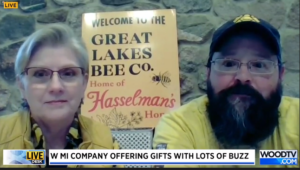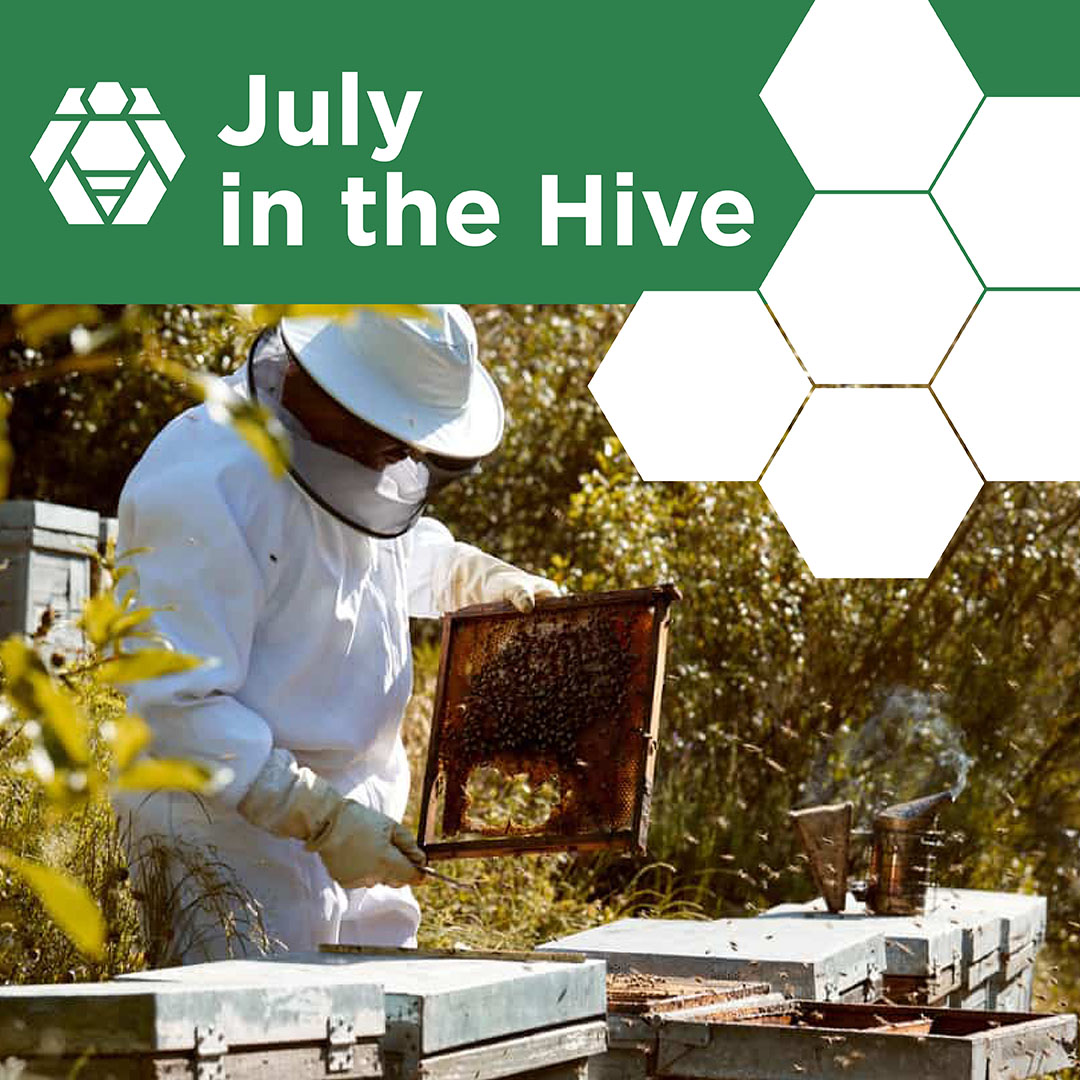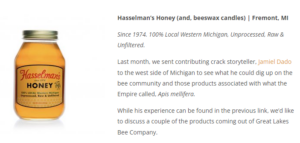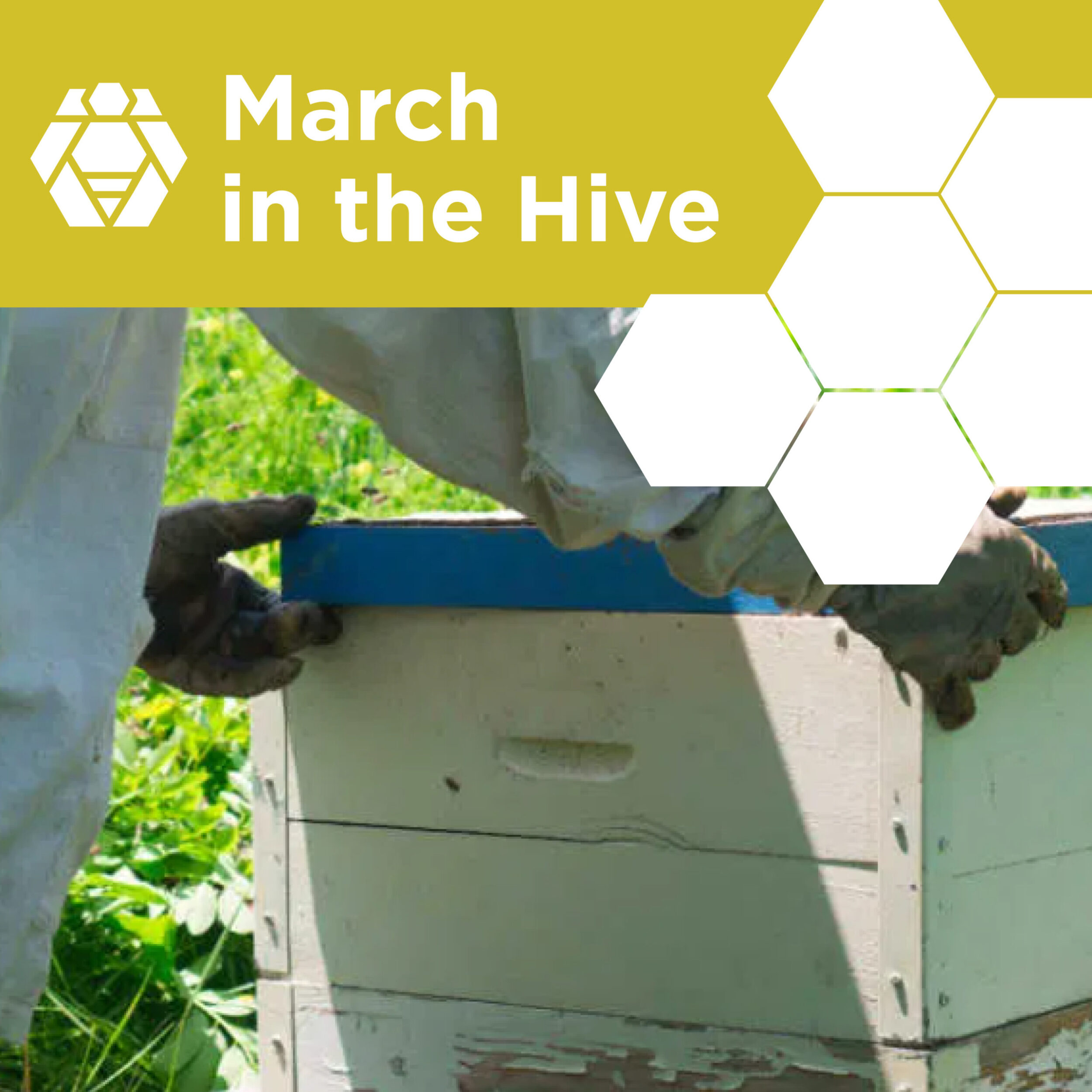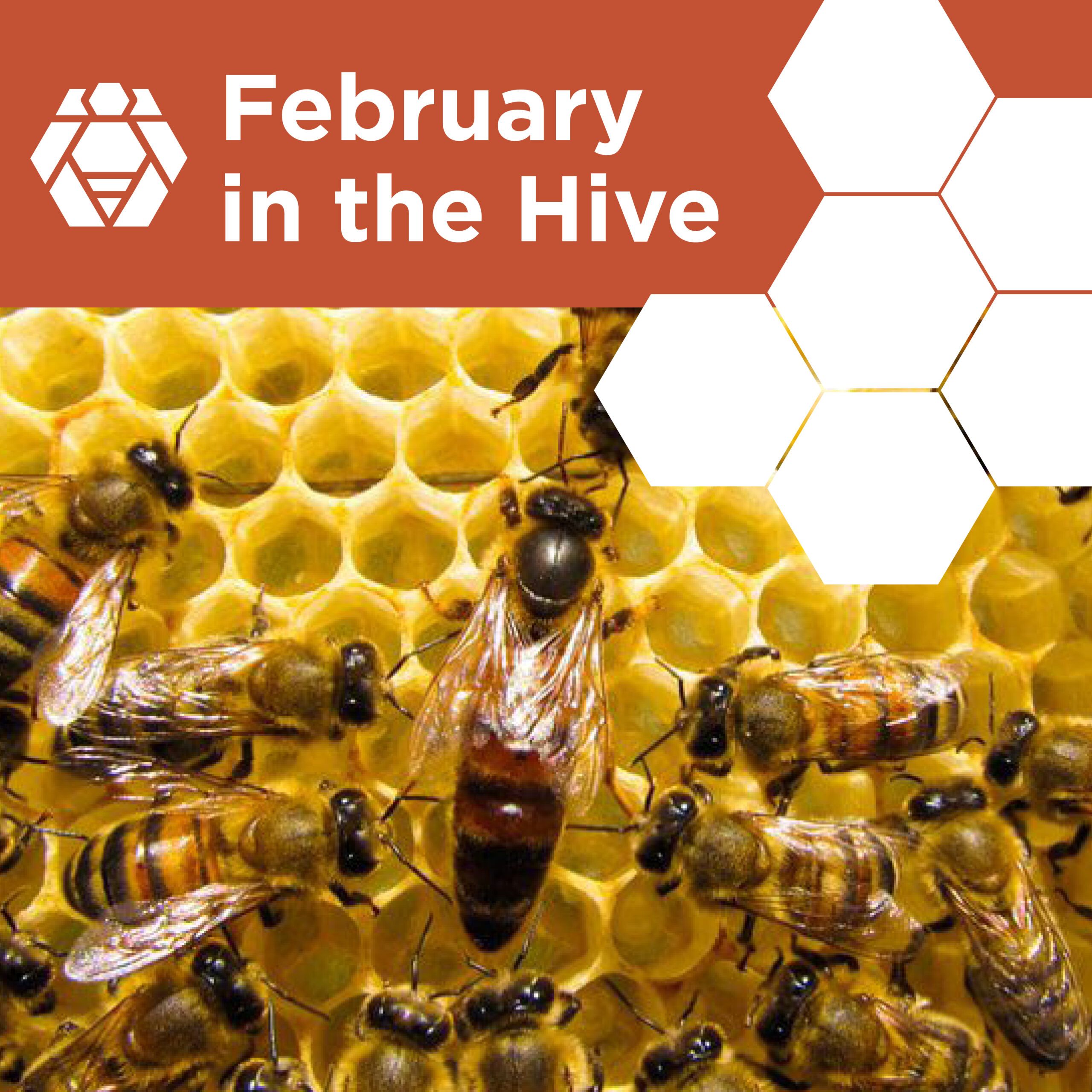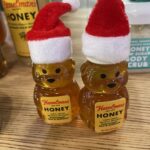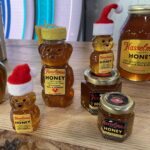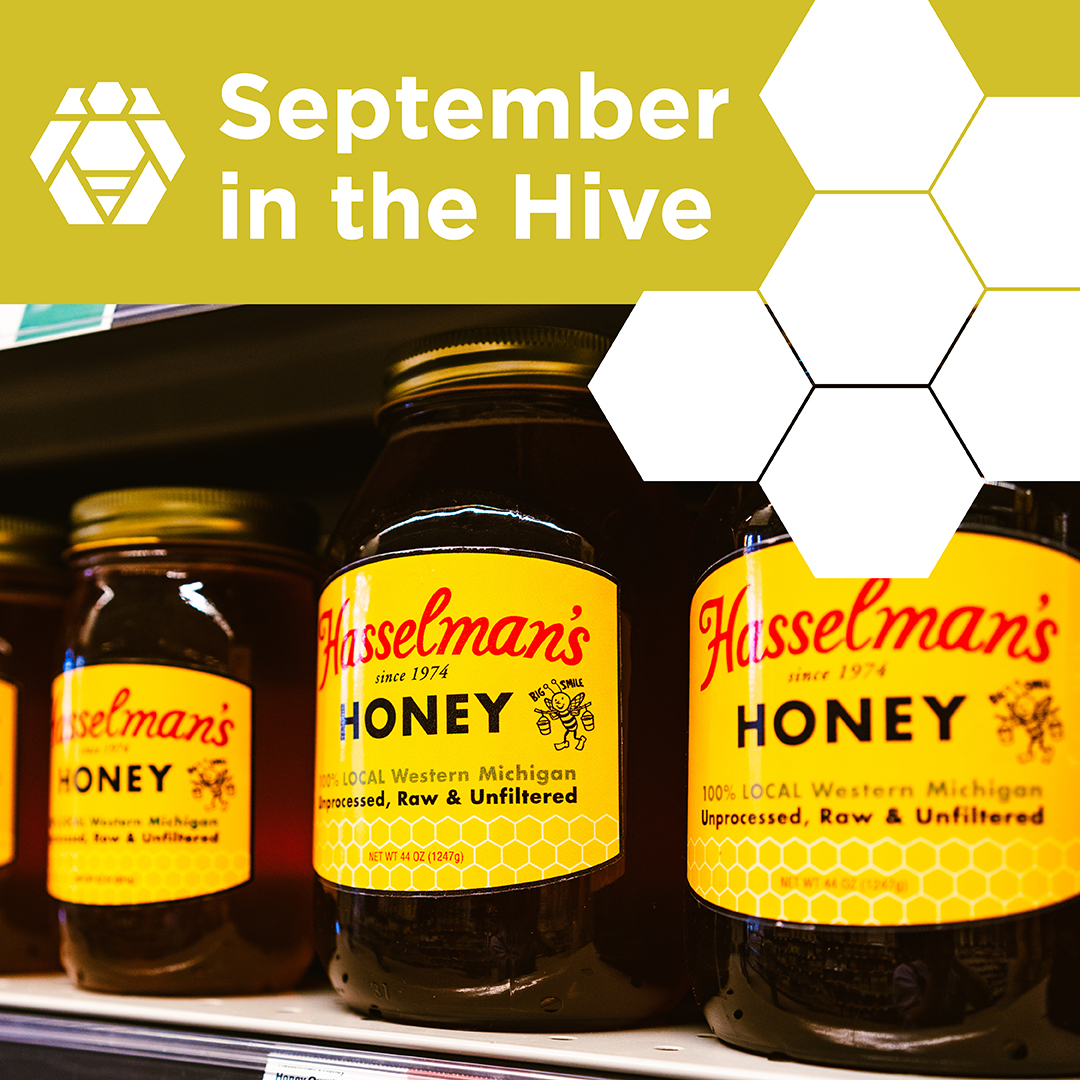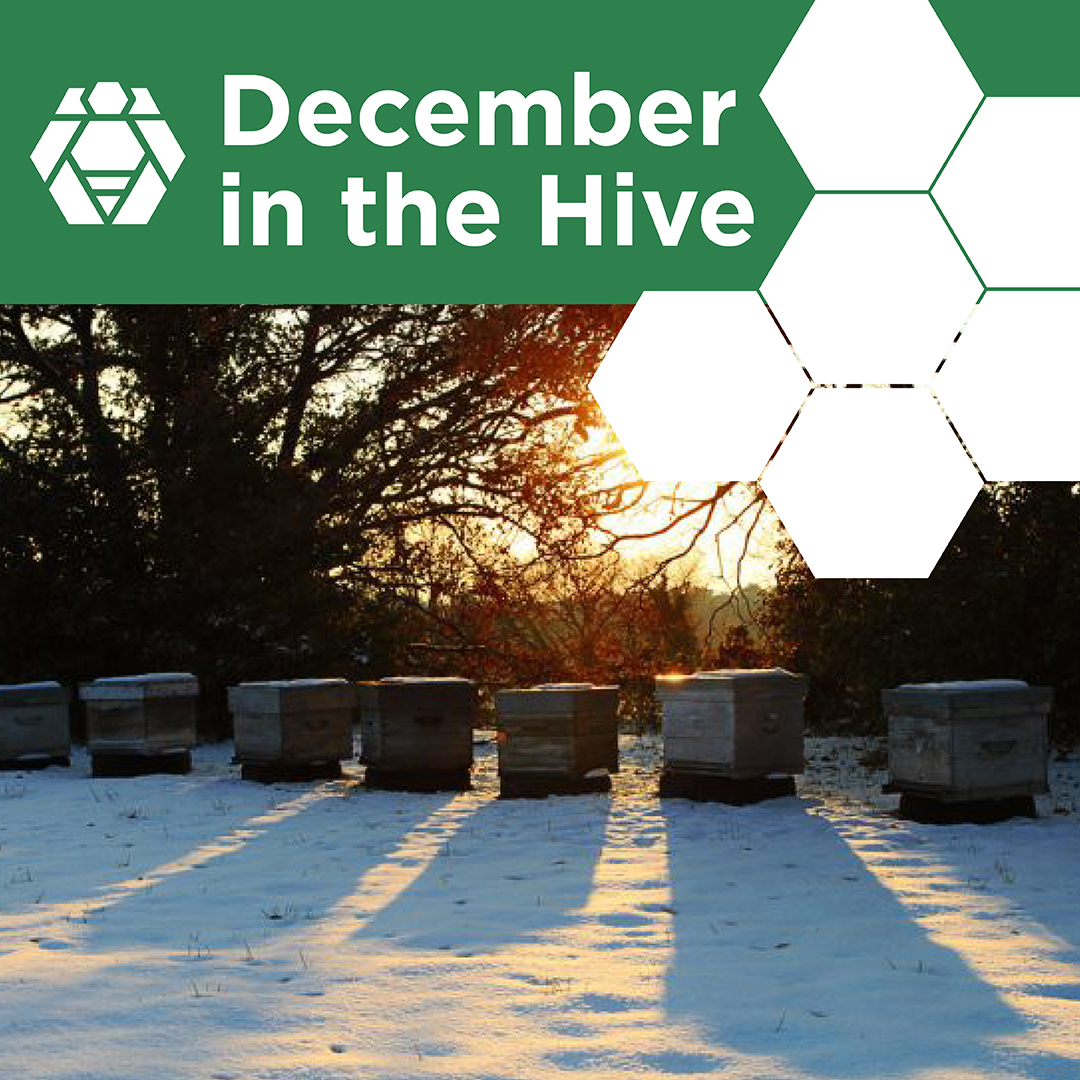
Great Lakes Bee Company Owner Genji Leclair and General Manager Stefan Braun talked with FOX 17 Morning Mix and WOOD TV8 about how bees can make the perfect last-minute holiday gift.
“Bees are fascinating,” Leclair told FOX 17. “They’re important and have such a contribution to farming, agriculture, our food supply and they’re fun to take care of.”
Braun, who admits to being fascinated by any “creepy crawlies,” told FOX 17: “Bees carry a special place for me. I’ve been around them since I was a little kid. Once I became an adult, I dove in head first and learned everything there is to know about bees and want to continue learning about them.”
Leclair shared that if you’re thinking about giving the gift of bees for any occasion, there are some things to take into consideration, Leclair and Braun said.
“To take care of a domesticated animal – that is the honey bee – that’s something that can’t be taken lightly,” said Braun. “It is a chore and it is a job – and I love doing it.”
“When giving bees as a gift you want to make sure the person you’re giving it to – it’s like giving a puppy or any kind of animal – that they’re up for the challenge and the long-term commitment,” said Leclair. “A lot people think bees, because they’re wild insects, you can put them in their hive and they’ll be okay. But that’s not the case. In choosing a gift like this for someone, you want to make sure that this is something that they’re up for and would be committed to.
“You also want to make sure that they’re not allergic to bees,” Leclair added. “Bees do sting and some people are allergic, so you want to take that into consideration as well. Other than that, there’s some ongoing costs. Just like taking a dog to the vet and getting those vaccines, there’s care for the hive as well because there are different things that can happen in the hive – you might have to replace your queen, you have to treat the hive for certain things. Other than that, it’s fascinating and it’s so fun and amazing to be in the bee world.”
Great Lakes Bee Co. also wants to help beekeepers – new and experienced – with their bees. They’re offering beekeeping classes on March 9 and March 23. Classes are from 9 a.m. to 1 p.m. and are $50. Online registration is open.
“It’s a beginner bee class that will tell people how to prepare their location for the bees, how to maintain their bees, what kind of elements to look for in their bees and, of course, the most important part, how to harvest their honey; and how to make it a relationship between the beekeeper and the hive,” said Braun.
“A lot of times when people want to start beekeeping, they don’t know exactly what they need to have to start beekeeping, so we thought it would be a good option to allow people to purchase their bees, their hives and all the accessories they’ll need to go with it,” Braun told WOOD TV8. “It’s really handy for newbie beekeepers to know what they need to start out.”
“When I moved to Michigan and started to get into bees, I had no idea where to start,” Leclair said during her interview with WOOD TV8. “I just knew I loved honey and wanted to do something great for the environment. A lot of people just don’t know a lot about the importance of bees, what they do for the environment, how they impact the local ecology around their areas, the agriculture and their own garden. Beekeeping is one way you can really support your local farmer or even your own local grower, and also get some honey.
“Having access to information and someone who can mentor and demonstrate what it’s like to interact with the bees, how to set up a bee hive, how to protect yourself when you’re working with bees and some of the ins and outs of beekeeping is a great way to start your adventure in beekeeping, and have a little confidence in going into getting your bees started,” she added.
What’s Leclair’s favorite part about bees: Honey
“We have local, raw, unfiltered, unprocessed honey – it’s so healthy for you and it tastes so good,” she said. “Anytime you can get local, raw unprocessed honey do it from your local beekeepers. In addition to that, the hive has a lot of great byproducts like beeswax, and honeycomb and infused honey.”
Honey bees, honey and bee products and swag are available on the Great Lakes Bee Co. website. Beekeeping equipment will be available for purchase on the website in January 2024.
Watch both segments here:
